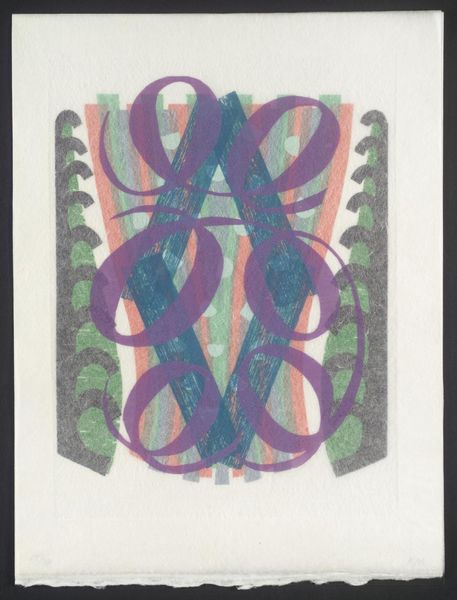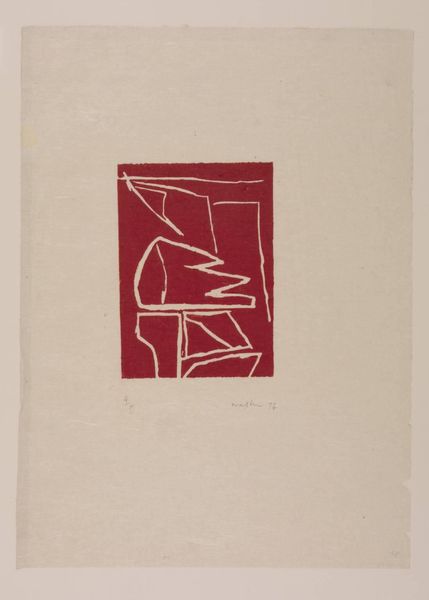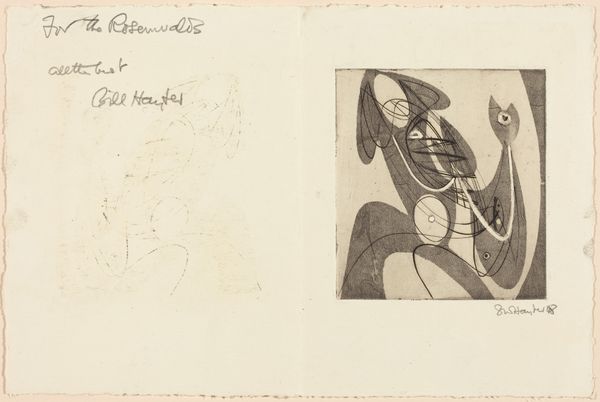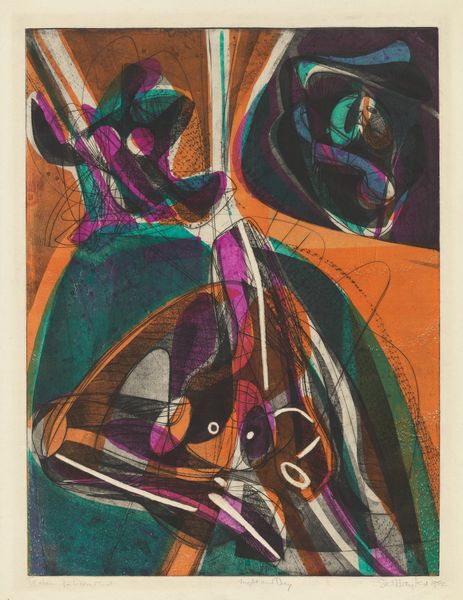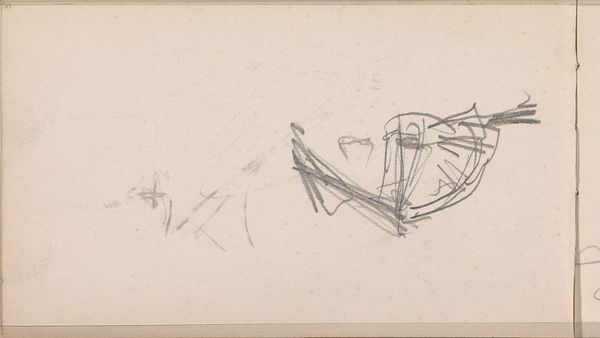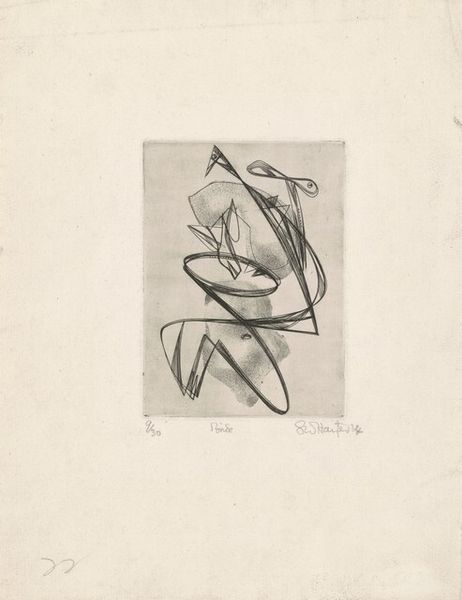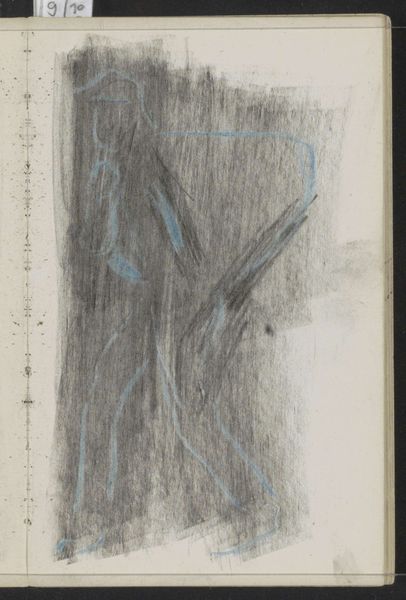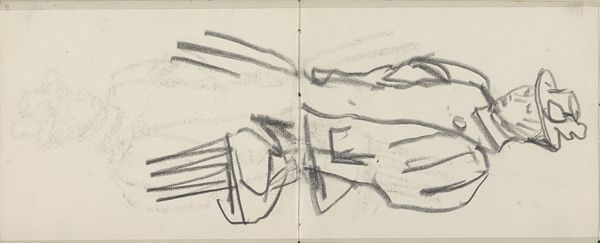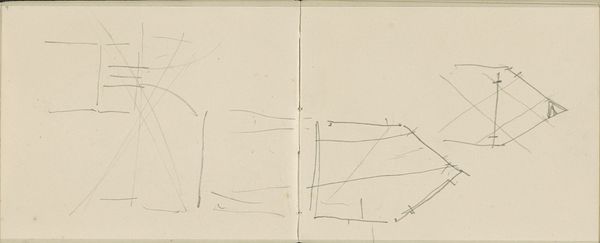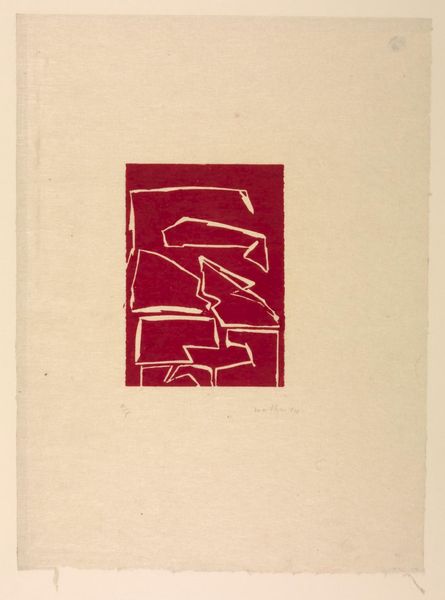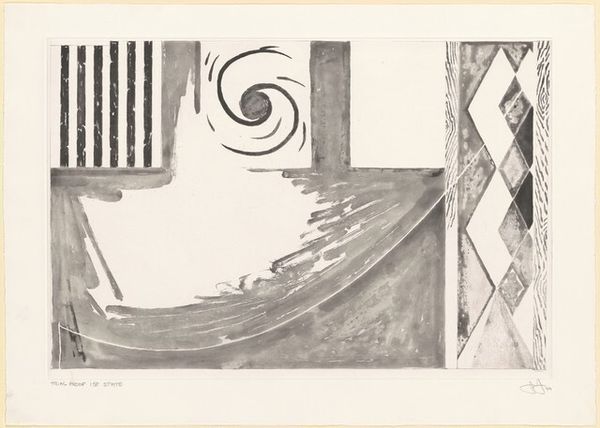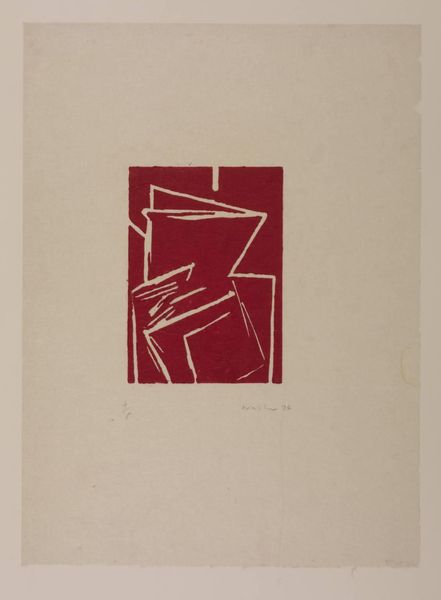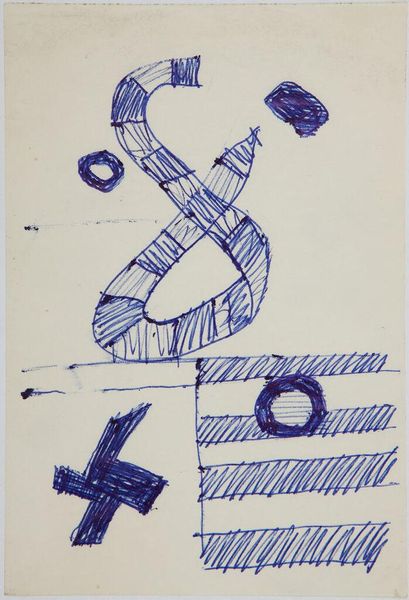
print, etching
#
abstract-expressionism
# print
#
etching
#
form
#
abstraction
#
line
Dimensions: block: 11.8 × 7.8 cm (4 5/8 × 3 1/16 in.)
Copyright: National Gallery of Art: CC0 1.0
Editor: This is "Greeting Card," an etching by Stanley William Hayter, made around 1955-56. It’s a sweet personal note turned into an abstract image with these looping pink and green lines. What can you tell me about this from an art historical perspective? Curator: The fact that it's a greeting card and a work of art simultaneously is really fascinating. This brings to light the sometimes blurry line between the personal and the public, particularly within artistic circles. Hayter was central to the re-introduction of Surrealism to the New York art scene through his printmaking studio, Atelier 17. How does this intimate, personal message coexist with his contributions to avant-garde movements and what does it suggest about the role of the artist in society? Editor: That’s a great point. It seems like something intended to be private is now on display. It does raise a question about accessibility, I guess. Curator: Absolutely. It questions who gets to experience and interpret this sentiment and raises questions about what is shared among the cultural elite versus what's broadly accessible. How might we interpret its shift in context, from personal message to a public artwork? Editor: It makes you think about who Betty was, what their relationship with "Bill" might have been... and why we get to see this! It seems very different than the political pieces you often discuss. Curator: And how the abstract expressionist movement’s emphasis on the individual intersected with the commercial or functional aspects of art. Does the knowledge that it’s a greeting card shift our perception of it compared to one of Hayter’s purely abstract prints from that era? Editor: Yes, it does! Now I see it almost as a document or artifact of a particular artistic social sphere, not just an abstract work. Thanks, I see that difference so clearly now. Curator: My pleasure. It's amazing how an historical view can give insights to even the simplest artwork.
Comments
No comments
Be the first to comment and join the conversation on the ultimate creative platform.
